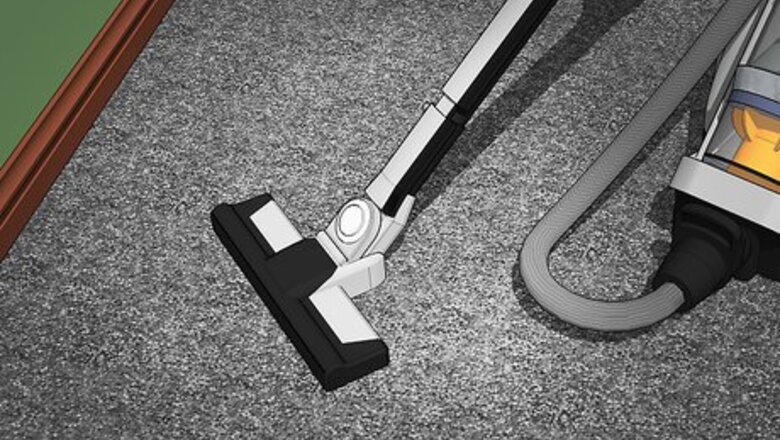
views
Creating an Inhospitable Environment
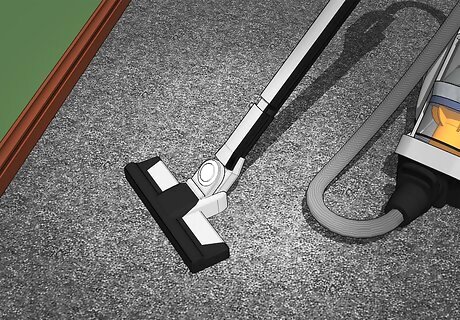
Vacuum and steam clean carpets regularly. Go over carpets and rugs thoroughly at least once a week with a vacuum cleaner. Doing this and annually cleaning with steam will prevent larvae from being able to live, grow and eat because it removes their food sources: lint, hair, and dead insects. You can either hire a professional to clean your carpets or you can steam them yourself.
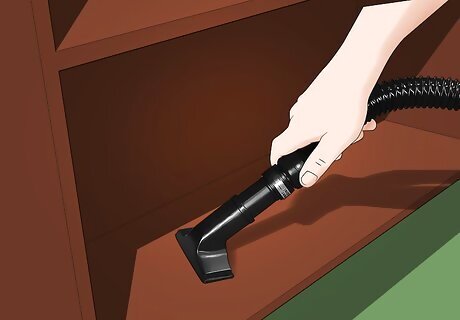
Keep storage areas clean. Vacuum floors, walls, and shelves of storage spaces at least two or three times a month to remove dust, spider webs, and any inconspicuous eggs or larvae that are hiding in corners.

Wash potentially infested clothes and other fabrics with hot, soapy water. Any trace of adult carpet beetles, larvae, and eggs can be removed with a good washing. Carpet beetles won’t have time to sustain life on your clothing if you stay on top of washing them. Wash and air out clothes immediately after they’re removed from storage. Don’t wait to do this until after you wear the clothes or hang them in your closet because this will allow any present beetles to find a new area to thrive in. Each month, make sure that any clothes kept in your closet or dresser that you haven’t worn and washed get a good warm wash and air dry too.
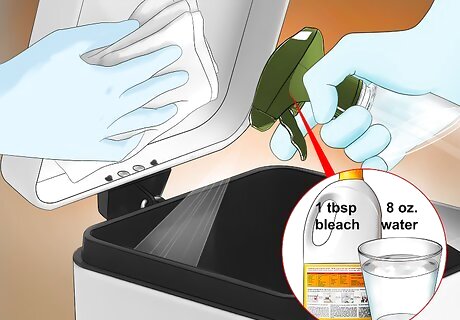
Clean out your trash cans. Every time you take out your trash, wipe the inside of your trash can lid with a disinfectant wipe. Once or twice a year, spray down your trash cans inside and out with a mixture of 1 tablespoon (14.8 ml) of bleach and 24 fluid ounces (709.8 ml) of water, rinse the cans thoroughly with a hose, and wipe them dry with a hand towel or paper towel.
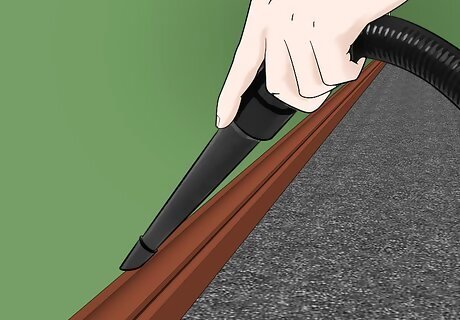
Remove dead bugs from crevices. Constantly be on the lookout for dead insects in the cracks of the walls and flooring of your home. Try removing dead bugs by vacuuming over them or picking them up with a paper towel. Cracks are one of the more subtle living spaces that carpet beetles can thrive within.

Choose synthetic materials over organic fabrics when possible. Get products made of synthetic fibers instead of natural ones as often as you can. Carpet beetles don’t feed on synthetic fabric. Keep this in mind when purchasing furniture, rugs, and carpets. Carpet beetles like wool in particular. Wool contains keratin, which carpet beetles eat.
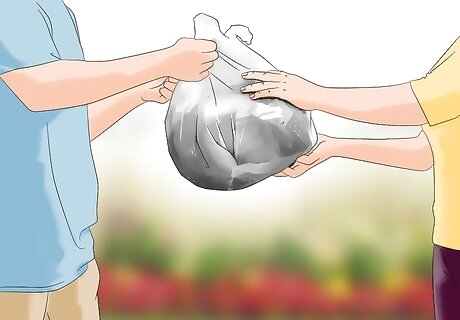
Donate old clothes instead of keeping them stored for months or years at a time. The longer you keep fabrics folded in a compact manner in a dark, hidden place, the more likely it is that carpet beetles will get to them. This is the kind of environment that they prefer. Avoid keeping garments, bedding, wool rugs, or upholstered furniture in storage. Instead, if you haven’t used the items in the past six months or so, consider dropping them off for donation.
Blocking Entry
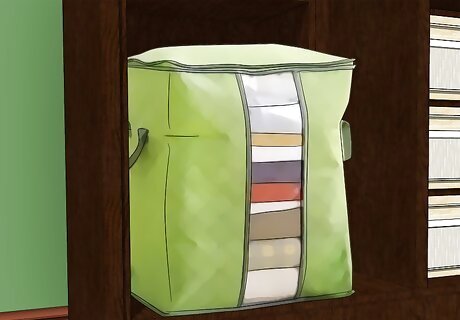
Store fabrics in tightly sealed plastic. Especially if your closet frequently goes untouched and sees little sunlight, opt to put less used clothing into tightly sealed plastic bags. Use of plastic bags will reduce your chances of attracting any carpet beetles by creating a barrier.
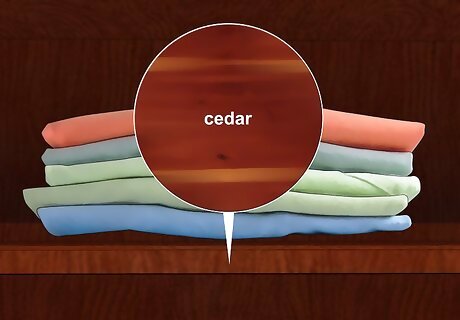
Store fabric in a cedar-lined chest or closet. Initially, the oils in cedar help to deter carpet beetles. Unfortunately, this can only serve as a preventative tool for a few years because the wood will dry out and no longer be as powerful. This is a good short-term action to take, and is most effective when the chest or closet has the ability to be sealed well. You can also hang your clothes on cedar hangers to discourage carpet beetles. Other cedar products such as cedar oils, chips, and repellent balls can also be beneficial but are usually only effective with killing or deterring larvae.
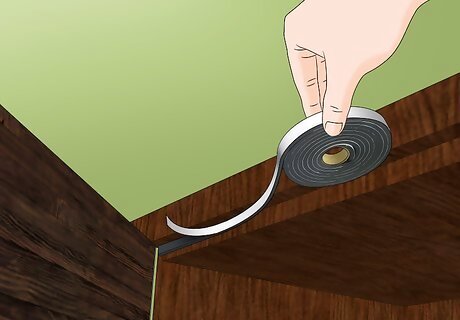
Seal holes and cracks in storage containers. Make sure that whatever you’re using to store your clothing has no openings whatsoever, whether you’re using plastic bags, garment bags, trunks, or boxes. Cover the cracks, tears, and holes with a durable tape, such as duct tape.
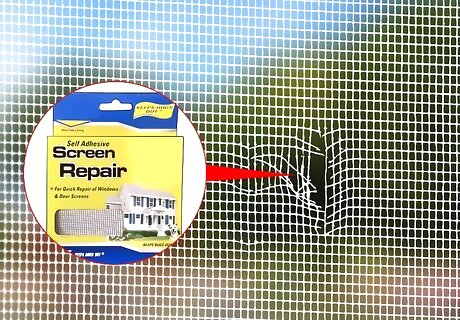
Secure window screens and air vents. Keep all small entrances to your home as sealed and secured as possible. Repair or replace any damaged or torn screens that you currently have, and make sure that your screens are made of a fine mesh. Use caulk along the outside edges of air vents to seal them securely. These security measures will prevent beetles from flying in from outside.
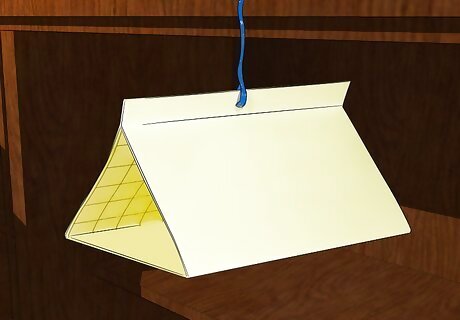
Hang sticky fly paper near windows and other potential entrances. Use fly paper near doorways and windowsills to catch any carpet beetles that attempt to enter your home. The beetles will stick to the paper and will die as a result of being unable to escape.
Inspecting and Eradicating
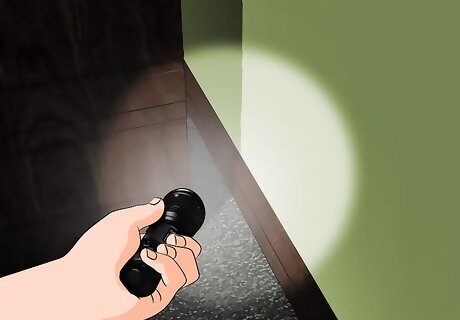
Inspect dark, secluded areas of your home for molted skins. If you’re suspicious or just want to be proactive, search through rarely lit, less trafficked areas of your home for fecal matter and most importantly, molted larvae skins. Larvae are commonly the ones who cause the most damage, and molted skins, identifiable by their translucent golden color and bug-like shape, are a strong sign that they’re present.
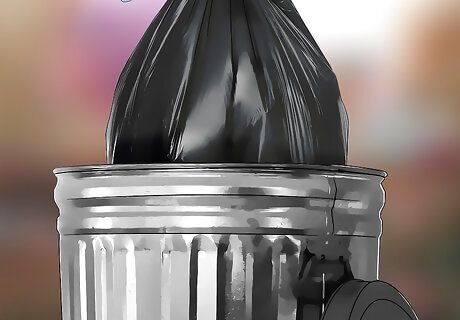
Dispose of heavily infested items. If you can part ways with the items that were just infested, it’s probably best to do so. With keeping an item that was previously highly infested, you run the risk of reintroducing any remaining carpet beetles to your carpet and clothes.
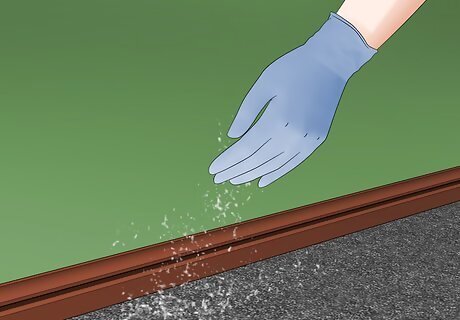
Spray or dust your carpet and furniture with an insecticide. There are many different types of carpet treatment products that you can buy. Make sure that whatever spray or dust you’re applying is for killing carpet beetles specifically, and check the label of chemical insecticides to make sure that the product contains chlorpyrifos, bendiocarb, and allethrin in order to ensure eradication success. Chemical insecticides may be harmful to other animals, so if you have any pets make sure to secure them in a location away from where the insecticide is sprayed or dusted. Spread boric acid all over your carpet and upholstered furniture, and make sure to vacuum it up within two hours of laying it down. While it is lethal for beetles, boric acid isn’t powerful enough to harm humans. Dehydrate carpet beetles with diatomaceous earth. Sprinkle diatomaceous earth on pet beds and in the back of cabinets and closets. It’s safe for pets and humans, but you’ll need to wear a respirator or mask while applying to keep yourself from inhaling the particles. Many common household pesticides that kill ants and roaches will also kill carpet beetles, or simply limit their food supply. Spray the product in corners of closets, on window ledges, and in any crevices that could potentially house carpet beetles.
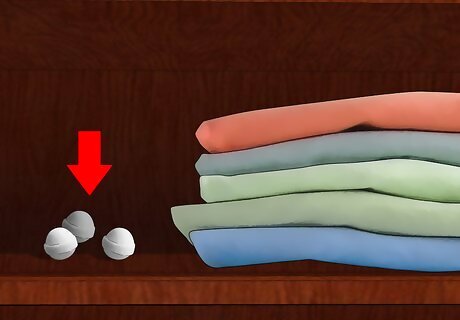
Store clothes and fabrics with resin strips or moth repellent. Because resin strips contain an active ingredient called dichlorvos, they are effective in protecting your fabrics for an extended period of time. Vapors of moth repellent are lethal for fabric pests if they are maintained at high concentrations for an extended period of time. Keep your resin strips or moth repellent in a tightly sealed container along with your clothing for two to three weeks for the best results.



















Comments
0 comment